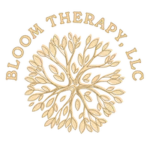Administrative & Insurance Questions
How do I book an appointment?
Call 610-639-4158, email hello@bloomtherapyllc.org, or use our online form. Our founder and lead therapist Jen will follow up to hold an initial free consultation with you and inquire about your needs to connect you with the best-fit therapist.
Do you accept insurance? What is the cost?
We are an out-of-network provider, which means we don’t directly bill insurance on your behalf. However, we can provide Superbills for reimbursement if your insurance plan includes out-of-network mental health benefits. We are also happy to provide you with questions to ask your insurance provider about any insurance benefits you may have and how you may be able to get reimbursed for your therapy fees.
Bloom Therapy rates:
- Initial Consultation – Free: Please reach out to see if Bloom Therapy is a fit
- Individual Therapy Session (55 minutes) – $185 with Jen, $165 with other Bloom Therapy therapists.
Upon discussion, EMDR, Brainspotting, Art Therapy will be incorporated as appropriate in your therapy sessions. There are no additional fees for these services.
Do you offer sliding scale fees or financial assistance?
What is your cancellation policy?
Where Do You Offer Therapy?
- In-person sessions are available in Berwyn, PA.
- Virtual therapy is available across Pennsylvania, Connecticut, and New York.
Do you offer virtual therapy sessions?
Is Virtual Therapy Effective?
- Art Therapy: Clients can engage in creative expression from the comfort of their own space, using personalized Bloom Therapy Toolkits, accessible materials clients own, and digital platforms.
- EMDR: Bilateral stimulation can be facilitated using an online eye movement platform accessible from your home computer or laptop, tapping techniques, or auditory cues, which remain just as effective online. Remote EMDR at Bloom Therapy is done in exactly the same way for in-person sessions, creating a seamless integration.
- Brainspotting: The process of identifying and processing trauma through eye positioning works effectively via video, as the therapist can still guide the client’s focus and track responses.
What hours are you available for therapy appointments?
What should I do if I feel like therapy isn’t working for me?
Who do you provide therapy for?
We work with individuals of all ages seeking support for anxiety, depression, trauma, grief, family conflict, life transitions, and women’s wellness.
We do not provide therapy for couples, or families.
Is Bloom Therapy HIPAA compliant?
General Therapy Questions
What can I expect in my first therapy session?
How do I know if therapy is right for me?
How often should I attend therapy sessions?
How long does therapy usually last?
Is therapy confidential?
Can therapy help even if I don’t have a “big” problem?
Bloom Therapy Areas of Expertise
What areas do you specialize in?
At Bloom Therapy, we specialize in a range of therapeutic areas to support our clients through various life challenges. Our expertise includes
- Grief and loss: Providing compassionate support for those navigating bereavement and significant life changes.
- Anxiety and depression: Helping clients manage overwhelming emotions, intrusive thoughts, and persistent sadness.
- Trauma and PTSD: Utilizing evidence-based approaches like EMDR, Brainspotting, and Art Therapy to facilitate healing.
- Family and relationship dynamics: Assisting individuals in setting boundaries, managing conflict, and navigating difficult relationships, including those involving narcissistic family members.
- Life transitions: Supporting clients through career shifts, aging-related concerns, and personal growth challenges.
- Women’s Wellness: Addressing challenges related to identity, reproductive health, motherhood, societal pressures, and empowerment.
- Self-esteem and personal empowerment: Helping individuals develop confidence, self-compassion, and resilience in their daily lives.
Our team is committed to providing a tailored approach to therapy, ensuring each client receives the specialized care they need.
What therapeutic modalities do you use at Bloom Therapy?
At Bloom Therapy, we take an integrative approach, combining traditional talk therapy with specialized evidence-based modalities to best support our clients. Our core therapeutic approaches include:
- Eye Movement Desensitization and Reprocessing (EMDR): A structured approach designed to help process traumatic experiences by using guided eye movement known as bilateral stimulation, reducing emotional distress and allowing for healing.
- Art Therapy: Incorporating creative expression as a means of exploring emotions, processing experiences, and fostering self-awareness.
- Brainspotting: A powerful mind-body approach that accesses deep-seated trauma by identifying specific eye positions connected to unresolved emotional experiences.
- Traditional Psychotherapy: Using talk therapy methods such as cognitive-behavioral therapy (CBT), psychodynamic therapy, and mindfulness-based strategies to foster personal growth and healing.
By integrating these modalities, we tailor therapy to each individual’s unique needs, ensuring a comprehensive and personalized healing experience.
How do I know which therapy approach is right for me?
EMDR FAQs
How long does EMDR take to work?
Is EMDR similar to hypnosis?
Is EMDR only for PTSD?
Do I have to vividly relive my trauma for EMDR to work?
Does EMDR erase memories?
Is EMDR effective for sexual trauma?
Do you offer both in-person and remote EMDR sessions?
Art Therapy FAQs
Who can benefit from art therapy?
What types of art are used in art therapy?
Can art therapy be combined with other forms of therapy?
What should I expect in an art therapy session?
Do I need to be an artist to benefit from art therapy?
Is art therapy only for children?
Is art therapy just arts and crafts?
Brainspotting FAQs
Is Brainspotting too intense or invasive?
Is Brainspotting only for individuals with severe trauma?
Does Brainspotting require a lot of effort or technical knowledge from the client?
What conditions can brainspotting help with?
What is the difference between EMDR and brainspotting?
How soon will I see results from brainspotting?
Can Brainspotting help with setting boundaries in difficult relationships?
Is Brainspotting effective for chronic stress and burnout?
How to Get Started
1
Schedule a Free Consultation
Connect with Jen to see if Bloom Therapy is the right fit for you.
2
Explore Your Options
3
